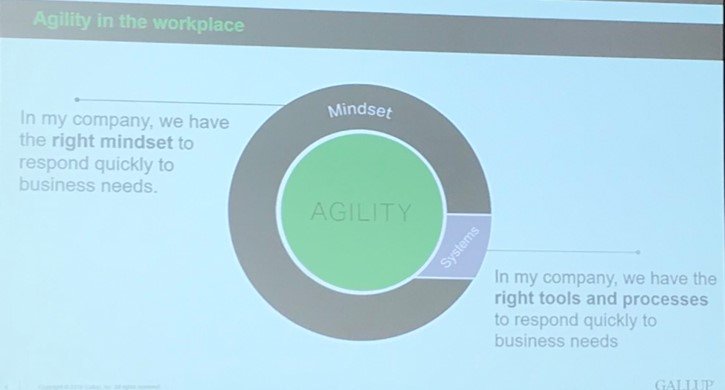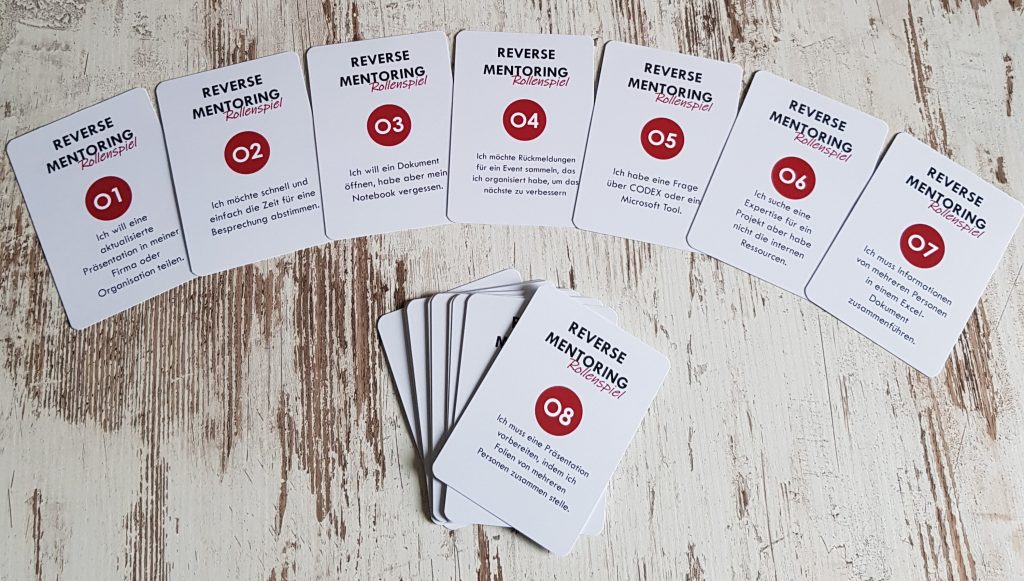The new way of working together … 5 steps how it works
Part two - how can the it work out to really work together?
Meanwhile, there are many tools and tool suites that can make the work of each individual easier. However, their power only really unfolds when they support collaboration. Although many companies have already introduced tools, they often get. What is the reason for this? We should focus more on the mindset rather than just the tools and skillsets. With the five steps I am outlining, we are paving the way for new cooperation.
The new way
After I have outlined in the previous article why the new way of cooperation often does not work yet, I will now show how it can work.
Collaboration environments such as GSuite, Office 365, and Slack are toolsets for which a certain skill set is required. But they are much more than that because they question basic assumptions that have grown over the years. They are not just useful new tools that fit together well. They transport a new way of working and thinking: Out of the silo into transparent cooperation.
We are used to being the owner of our documents and only passing on the finished “product”. We have learned that knowledge is power and that some human bottlenecks are successful precisely because they do not share their knowledge.
Some managers are afraid of losing their raison d’être as soon as they no longer have a knowledge edge. For these and other reasons, it is only partly about tools and skillsets. Much more important is the mindset

and this is a huge challenge for the introduction of collaborative environments. It’s not a matter of introducing tools in the short term, but of using the tools as a catalyst for a mindset change. A change process that needs to be actively supported and professionally accompanied.
This is made possible by the interaction of management, IT, marketing, HR, and a department that focuses on supporting this change process. Provided it is equipped with enough resources. Some companies have understood this. Such as Continental with its “Office 365 – New Work Style implementation and adoption journey”.
Even under the best conditions, it is not easy. The process takes years with ups and downs.
“If no one’s upset by what you’re saying, you’re probably not pushing hard enough.” (Fried & Heinemeier, ReWork)
There is no blueprint, but approaches that help us.
Index
Five steps on the road to a new collaboration
Step 1: Tools/Toolsuite
Uncertainty paralyzes. Recommend which tools or tool suites should be used. A decision creates certainty because employees and colleagues know afterward which tools are available and feasible. They no longer run the risk of using banned tools.
Just two years ago, I used different virtual conference systems every week. We rarely started on time and almost always had technical problems (technical problems = lack of understanding of the users). For me, it was a great relief when we agreed on a common language (Office 365 and MS Teams). I gained my first experience in November 2017 during my first Working Out Loud (WOL) Circle. We didn’t know how it worked then and just gave it a try.
Step 2: Responsibility for the change process
Even without a big change project, service departments have enough to do. If we burden them with additional tasks, either the daily business or the project suffers.
Resists the temptation to set up a classic IT project. Give a new team the chance to put all their energy into the project. Instead of transferring IT employees to the project group, search in other departments as well for team members. Staff it with people who want to work on this project. Welcome the fact that, in addition to IT employees, there are IT-affine employees from a wide variety of departments. They find it easier to adapt to the concerns and needs of their environment and to explain technical tricks simply. If the team is enriched by psychologists and tool experts, you are on the right track.
Step 3: Speaking with one voice and providing information
The best project team is on the losing end alone. Therefore, speak with one voice. Develop a stringent communication strategy with management, HR, IT, and marketing and pursue it together. Do not present the workforce with a fait accompli and inform them early.
- What are we doing, and why are we doing it?
- What are the concrete advantages for the individual?
- When do we start doing what?
- Who are the contact persons?
Resistance is for sure if this does not happen. Someone who boots up his laptop in the morning and learns shortly before a call that e.g. Skype is not working anymore is not enthusiastic. If the information is provided months in advance, enriched with useful information and training offers, it is no longer difficult to say goodbye to beloved tools.
Step 4: Inspiring managers and integration
New things first cause more work instead of less. The situation is made worse by the fact that productivity is declining. People need time to learn how to use the tools and mistakes are inevitable. Besides, many feel that the “new way of working” is a loss of control:
- Documents are in the cloud,
- Information is shared and visible,
- Colleagues could modify or delete documents, etc.
These concerns can almost always be dispelled – provided employees are allowed to express them. Early adopters have a hard time in departments where managers do not lead by example or express the same concerns.
Offering reverse mentoring can help. If we embed them in management meetings, the effort for all participants is minimal. Simple and helpful use cases, which can be integrated immediately into the daily work routine, create positive experiences and put any information brochure in the shade.
“The easiest, most straightforward way to create a great product or service is to make something you want to use.” (Fried & Heinemeier, ReWork)
If the local managers support the project, the traffic lights are green. Instead of burdening the employees with all-day tool training, start with small steps. When does the use of a tool make sense, and what are work hacks that can be implemented immediately? Instead of commanding, make offers. Offers are not binding. Whoever uses a tool does so voluntarily.
Integrate tools into existing training, events, and workshops:
- Scheduling (e.g. Doodle, FindTime, Calendly)
- Expectation query and feedback with online forms (e.g. MS Forms, Google Forms, SurveyMonkey)
- Collect transfer tasks (e.g. MS ToDo, Google Keep, Evernote, Todoist)
- Share training documents in a cloud folder (e.g. OneDrive, Google Drive, iCloud, Dropbox)
- Share key messages from events on your Enterprise Social Network (ESN) and much more.
Also, offer micro learnings in EVERY meeting. 5-10 minutes are enough to learn something new. The transfer works if the colleagues immediately implement what they have learned – make it a habit! Ideally, you will have a collection of regularly occurring challenges and suitable solutions ready (e.g. Reverse Mentoring Cards).

“The secret of getting ahead is getting started. The secret to getting started is breaking your complex overwhelming tasks into small manageable tasks and then starting on the first one.” (Keller & Papasan, The One Thing)
Step 5: multiplier network
In large companies, the previous steps are not enough. If the topic picks up speed, it gets fast: the demand from the operative units exceeds the supply. Even highly motivated project teams quickly reach their limits and have to reject inquiries. The momentum is lost. Frustration arises.
To overcome the challenges, we need Boots on the Ground. And we should tie them up before the demand is there. Those who identify and qualify motivated employees in the business units at an early stage have the training power where it belongs – close to internal customers.
Continental has had a good experience with its guide network and other companies are also looking for their digital talents. These are not digital experts, but people who enjoy learning new things. Their enthusiasm is contagious, and it is easy for them to impart knowledge. The best thing about it is that they are already in the company, and they are willing to contribute. We just have to find and help them.
The project team supports the digital talents with special training and training material. If they are unable to answer questions from colleagues, the project team is there to assist them. So that nobody loses touch, a regular virtual exchange and once a year an event helps as well. Barcamps are a great way to talk about experiences, discuss Evergreen innovations and share use cases.
By the way, digital talents enjoy knowledge transfer, but they cannot clone themselves. If you burden them with new tasks in addition to day-to-day business, their batteries will run out. A half working day a week is an investment that quickly pays for itself thanks to the productivity and satisfaction gains of your colleagues.

Comments are closed.